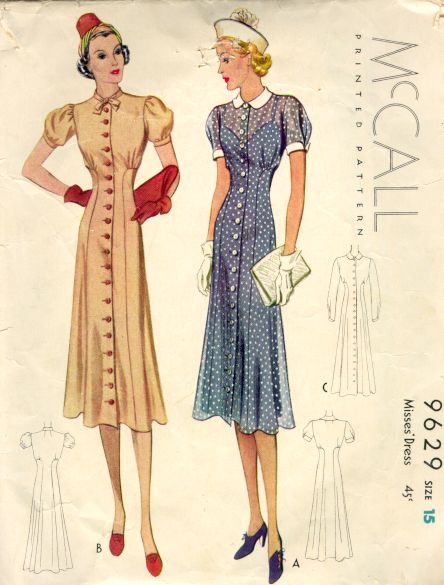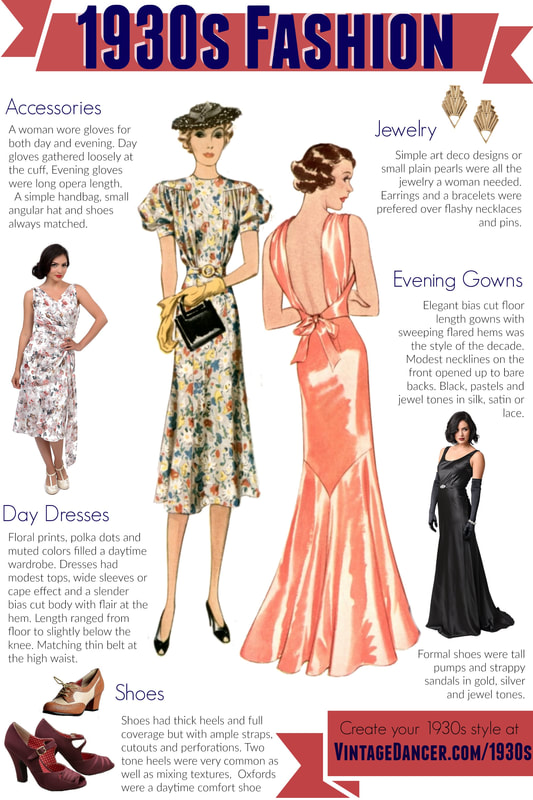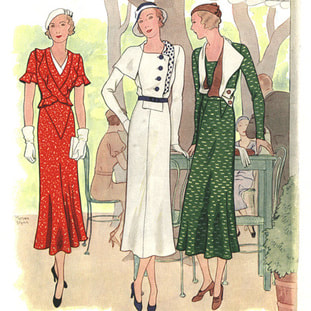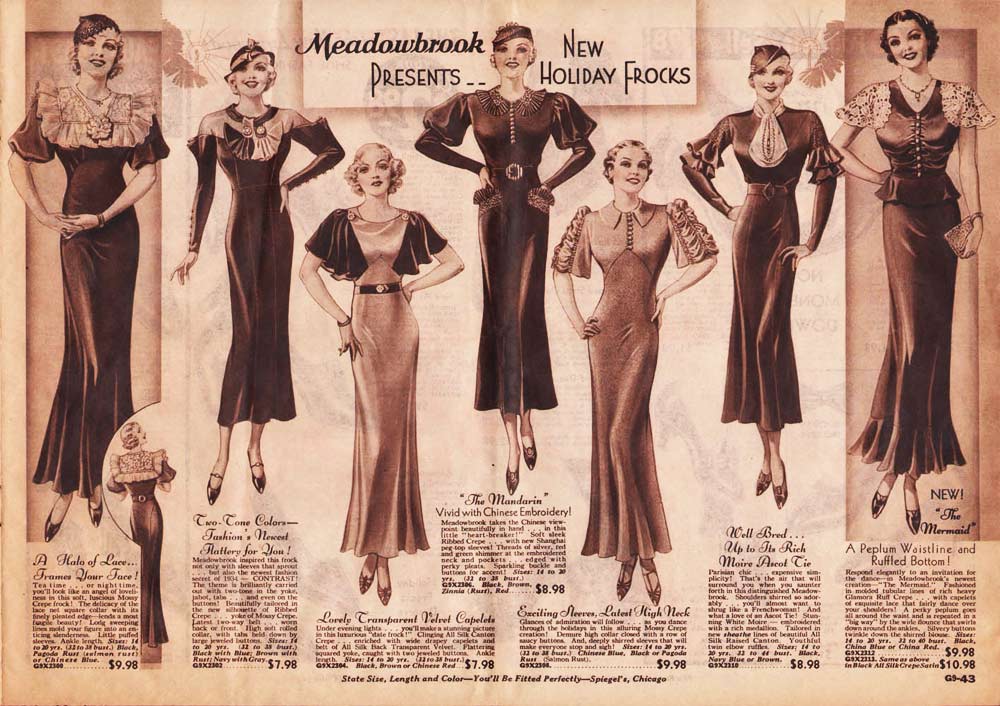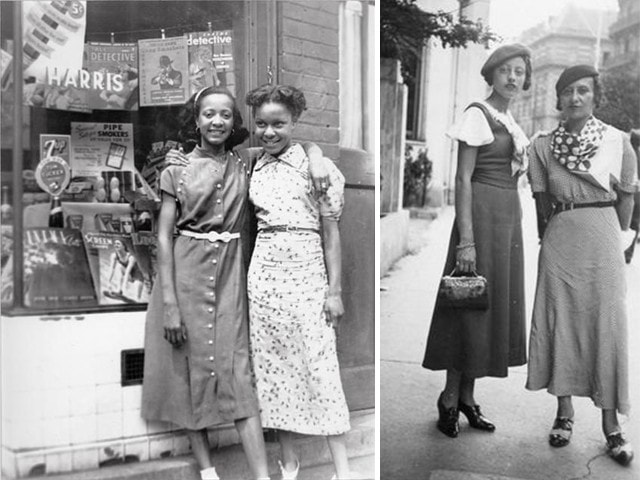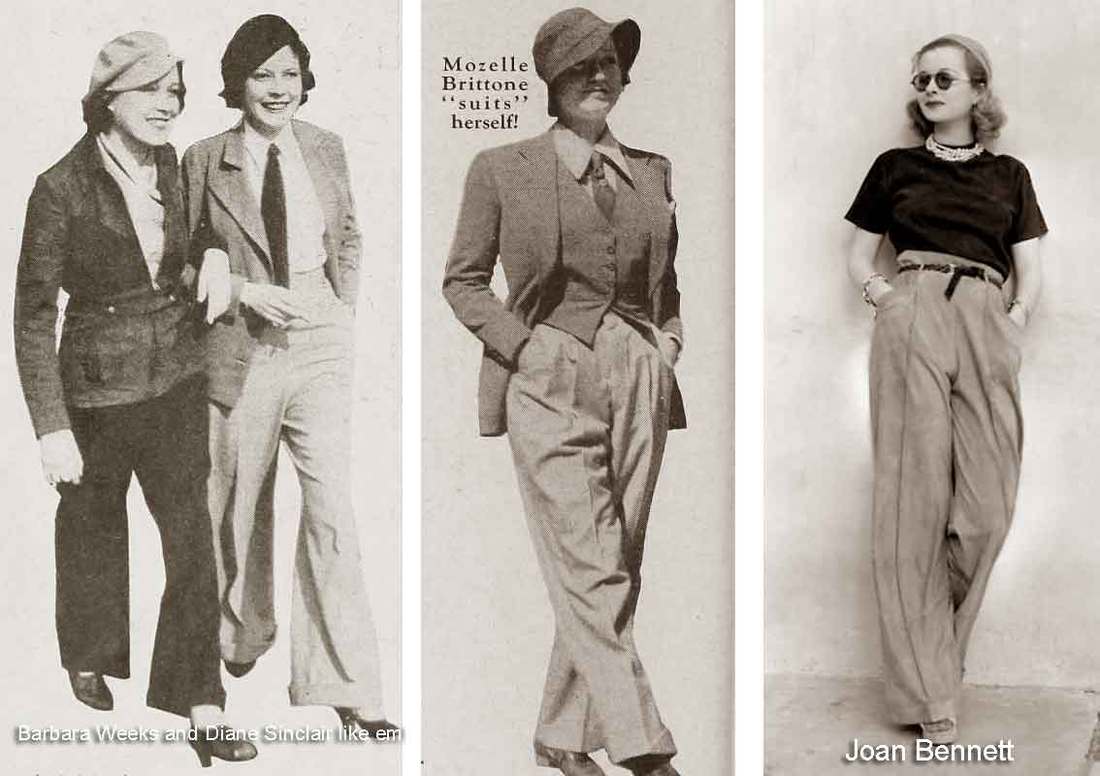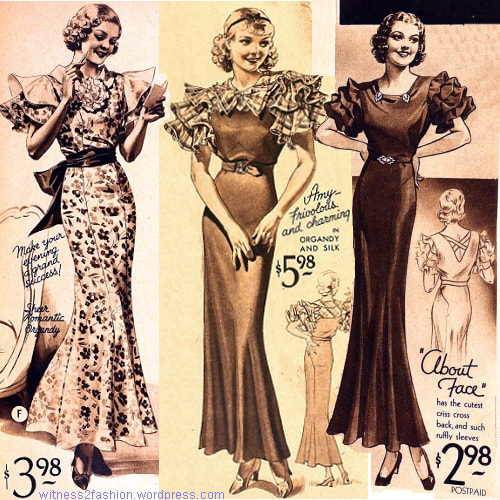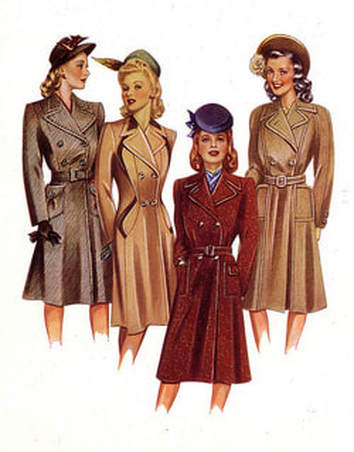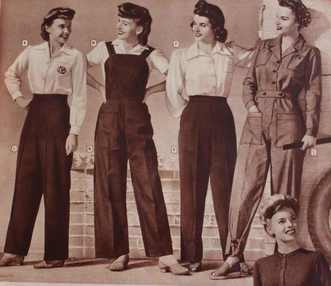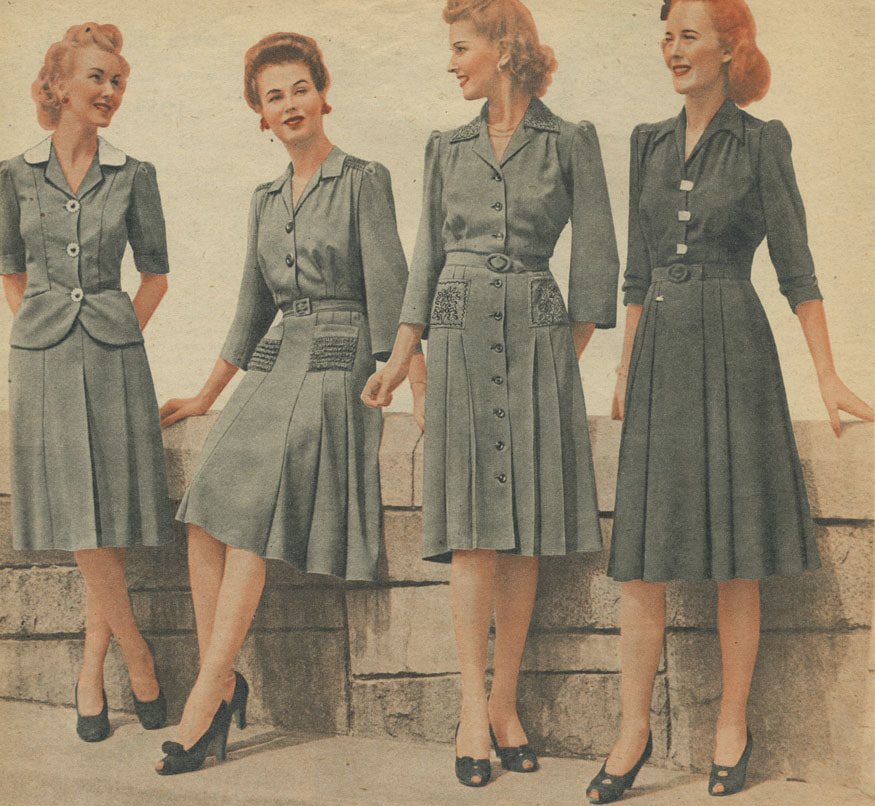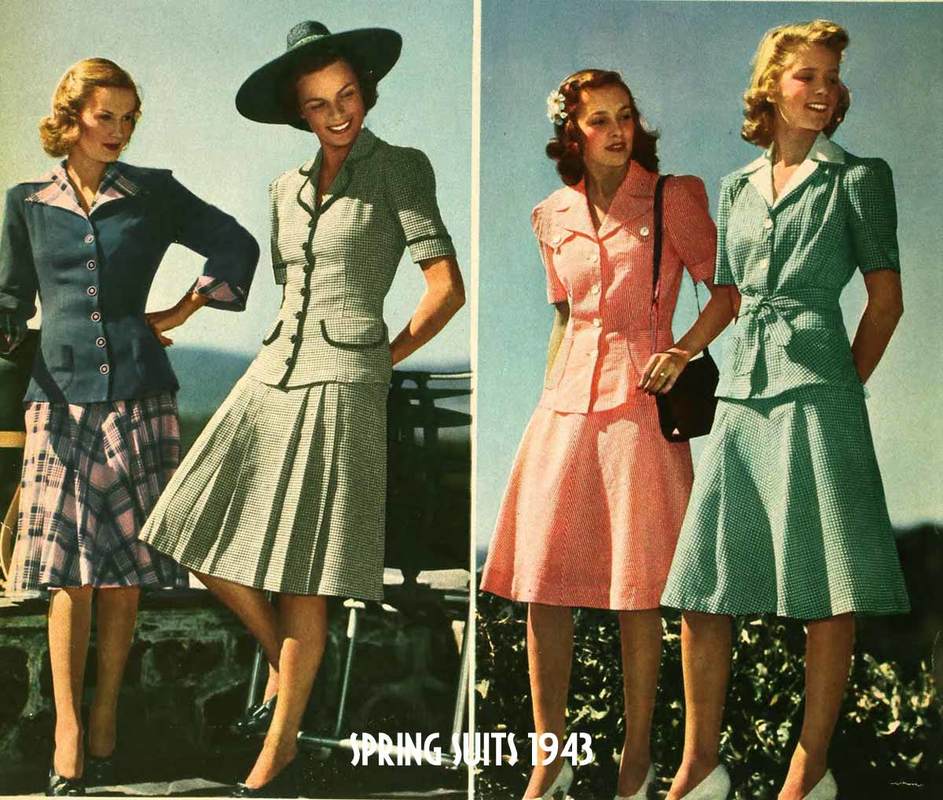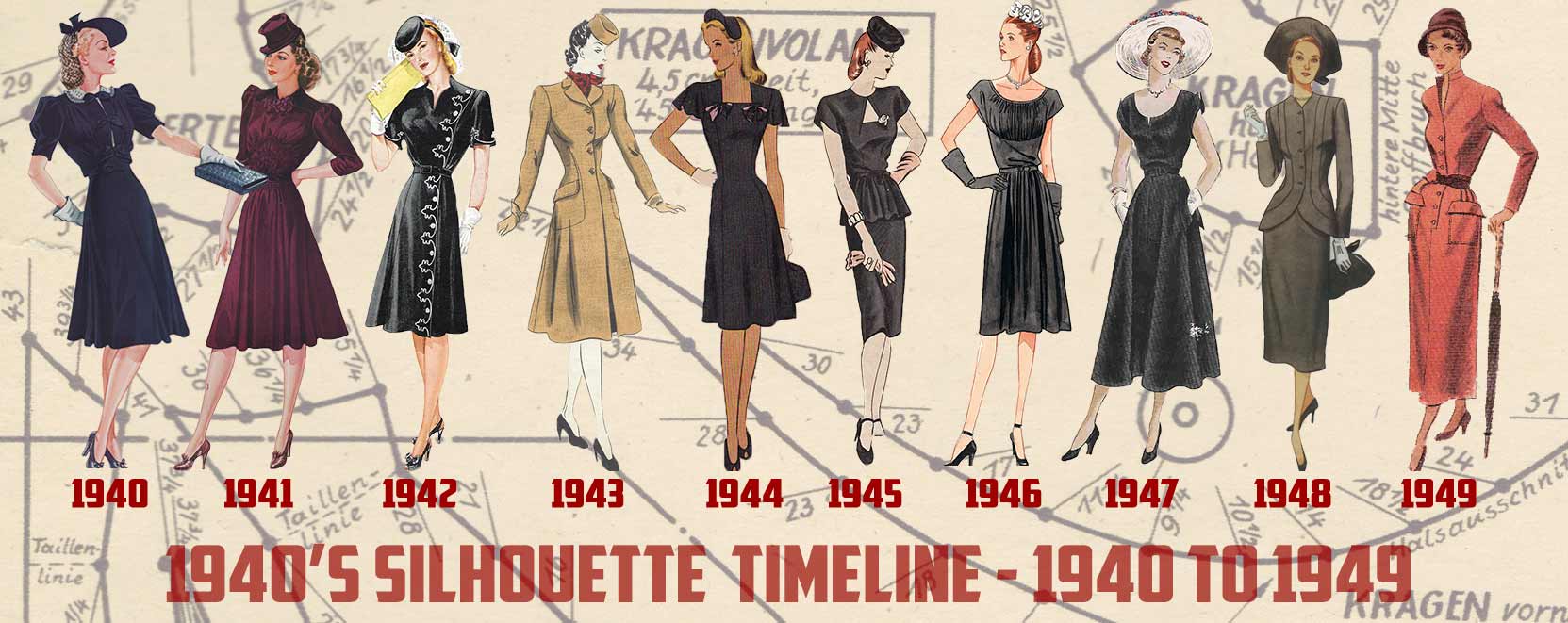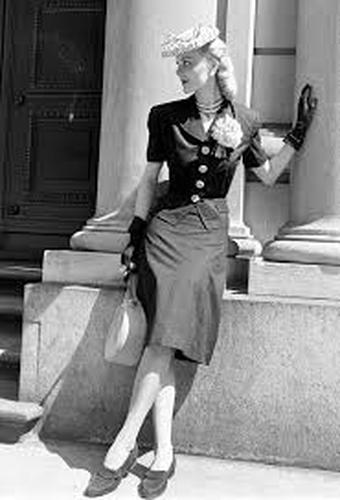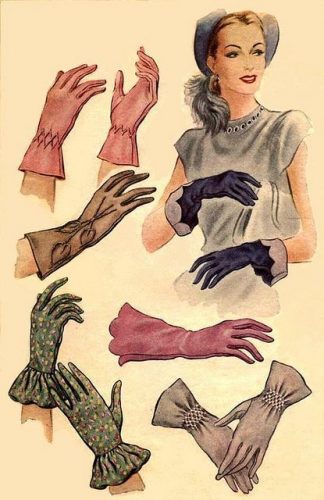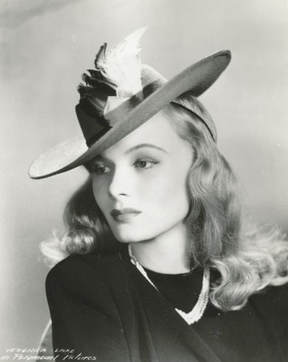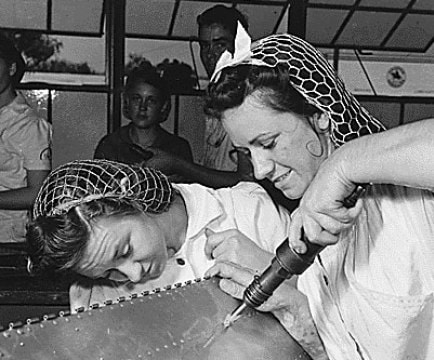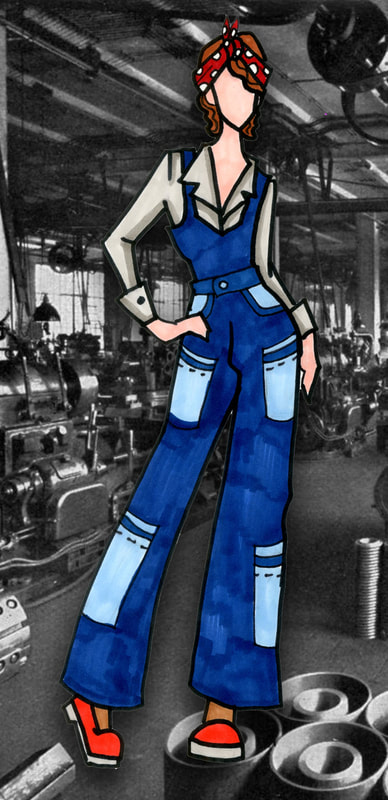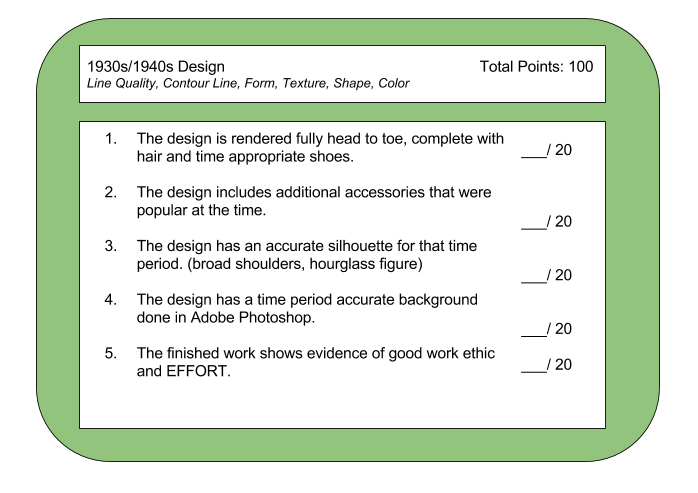|
1920's Phasing Out
The lighthearted, forward-looking attitude and fashions of the late 1920's lingered through most of 1930, but by the end of that year the effects of the Great Depression began to affect the public, and a more conservative approach to fashion displaced that of the 1920's. For women, skirts became longer again up until the rations began and the waist-line was returned up to its normal position. Other aspects of fashion from the 1920's took longer to phase out. Cloche hats remained popular until about 1933 while short hair remained popular for many women until late in the 1930's and even in the early 1940's. |
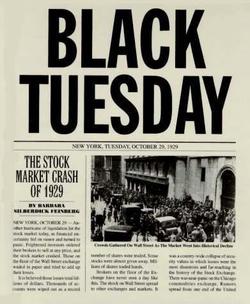
The Great Depression: Historical Event
The Great Depression took its toll on the 1930's women's fashion through to World War II which dates from 1939-1945. This greatly affected the fashion of how women dressed during the 1940's era. Because clothes were rationed and fabric was scarcer, the hem lines of dresses rose to knee length to save on material. The main silhouette in the 1940's included features such as an hour glass shape figure, broad shoulders, nipped in high waist tops and A line skirts that came down to just at the knee. An over all triangle look. By 1933, the trend toward wide shoulders and narrow waists had eclipsed the emphasis on the hips of the later 1920's. Wide shoulders would remain a staple of fashion until after World War II.
The Great Depression took its toll on the 1930's women's fashion through to World War II which dates from 1939-1945. This greatly affected the fashion of how women dressed during the 1940's era. Because clothes were rationed and fabric was scarcer, the hem lines of dresses rose to knee length to save on material. The main silhouette in the 1940's included features such as an hour glass shape figure, broad shoulders, nipped in high waist tops and A line skirts that came down to just at the knee. An over all triangle look. By 1933, the trend toward wide shoulders and narrow waists had eclipsed the emphasis on the hips of the later 1920's. Wide shoulders would remain a staple of fashion until after World War II.
|
Military Inspired-World War II Historical Event
Clothes became utilitarian and military inspired. Shoulder pads were huge at this time to give women that squared masculine military look. Pants or trousers were considered a menswear item only until the 1940's. Wartime austerity led to restrictions on the number of new clothes that people bought and the amount of fabric that clothing manufacturers could use. Women working on war service adopted trousers as a practical necessity. Women working in factories first wore men's pants but over time, factories began to make pants for women out of fabric such as cotton, denim, or wool. There was the introduction of the ensemble (matching dresses or skirts and coats). |
|
Accessories
Gloves were very popular during 1940's because they were seen as a status symbol. If you could afford to get fashionable gloves whose only purpose was to complete the look of the outfit, you were seen as well off during war times. However, since it was still war times of ration, elaborate lace trim and detail were removed from gloves and replaced by plain gloves. Evening gowns were accompanied by elbow length gloves, and day costumes were worn with short or opera-length gloves of fabric or leather. Manufacturers and retailers introduced coordinating ensembles of hat, gloves and shoes, or gloves and scarf, or hat and bag, often in striking colors. Again, if you were able to afford or get access to enough ration cards for these items you were viewed as higher class. |
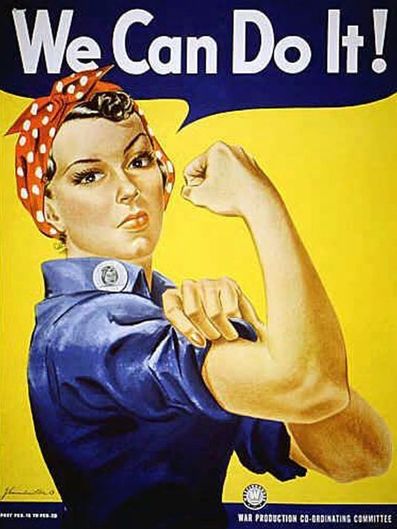
Head Wear
The 1940's are marked by iconic head wear. Clothing restrictions made hats become women’s statement pieces during the war years. Although hats were extremely popular they were not the only head accessories that were popular then. The snood was an important accessory to a woman working in the factory.
Snoods were fashionable and functional at the same time, they enabled factory women who were wearing pants and jumpsuits to still look feminine. Snoods pulled hair out of the face by containing it all at the back of the head in a hanging net. With all the long hair hanging in the net, the front of the hair was left out and could be curled and styled to glamorize the factory uniforms. Other popular headpieces were variations of headscarves, such as the bandana Rosie the Riveter is pictured wearing in the recruitment posters.
The 1940's are marked by iconic head wear. Clothing restrictions made hats become women’s statement pieces during the war years. Although hats were extremely popular they were not the only head accessories that were popular then. The snood was an important accessory to a woman working in the factory.
Snoods were fashionable and functional at the same time, they enabled factory women who were wearing pants and jumpsuits to still look feminine. Snoods pulled hair out of the face by containing it all at the back of the head in a hanging net. With all the long hair hanging in the net, the front of the hair was left out and could be curled and styled to glamorize the factory uniforms. Other popular headpieces were variations of headscarves, such as the bandana Rosie the Riveter is pictured wearing in the recruitment posters.
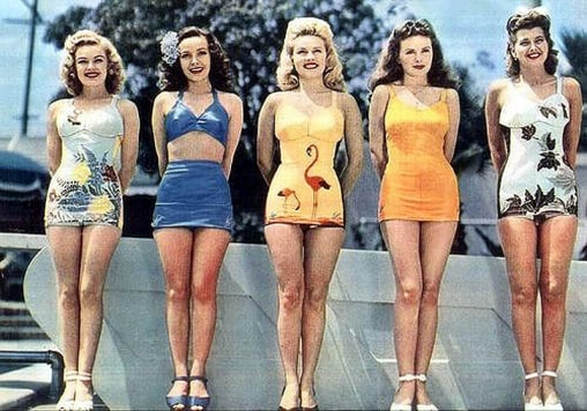
Swimwear
An important style that became popular due to the war was the two-piece swimsuit which later led to the Bikini. In 1942 the War Production Board passed a law called the L-85 which put restrictions on clothing production. For swimwear companies the L-85 meant they had to use 10 percent less fabric in all their designs, as a result swimsuits became smaller.
The bottoms were high waisted, cut low on the legs, and paired with a modest bandeau. The two piece, although born out of necessity, was still considered a daring style for the era.
An important style that became popular due to the war was the two-piece swimsuit which later led to the Bikini. In 1942 the War Production Board passed a law called the L-85 which put restrictions on clothing production. For swimwear companies the L-85 meant they had to use 10 percent less fabric in all their designs, as a result swimsuits became smaller.
The bottoms were high waisted, cut low on the legs, and paired with a modest bandeau. The two piece, although born out of necessity, was still considered a daring style for the era.
Assignment # 1
Google doc on google classroom.
Google doc on google classroom.
- What two main historical events happened in the 1930's and 1940's?
- Why did the trends of the 1920's phase out?
- How did rations effect women's fashion?
- What was the main silhouette and style of the 1930's?
- Why did military styles became popular in the 1940's?
- Why were matching accessories especially gloves popular?
- Why were hats important to women's fashion?
- What is a snood and why was it used?
- Why was the bikini invented?
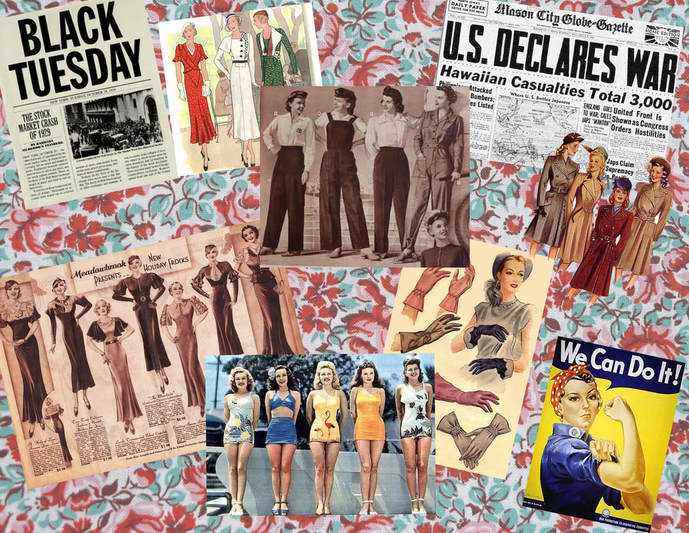
Assignment #2 and 3
You are to 2 create collages, one for the 1930s and one for the 1940's.
Feel free to include images that are of the time period and not necessarily "fashion". You need 10 images. Search 1930s/1940s backgrounds/prints for the background of your mood board.
www.youtube.com/watch?v=_OdQJFUoFLQ&feature=youtu.be
You are to 2 create collages, one for the 1930s and one for the 1940's.
Feel free to include images that are of the time period and not necessarily "fashion". You need 10 images. Search 1930s/1940s backgrounds/prints for the background of your mood board.
www.youtube.com/watch?v=_OdQJFUoFLQ&feature=youtu.be
|
Assignment # 4
You are to create either a 1930's or a 1940's design inspired by what you have learned about the fashions of that era. It must include the following:
|
